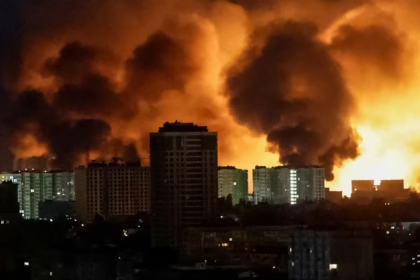Humaira Asghar Ali Found Dead in Karachi Apartment 21 Days After Passing
Humaira Asghar Ali found dead in Karachi apartment 21 days after passing, highlighting a prolonged period before the discovery of the actress’s body.
The Unfolding Tragedy
In a deeply distressing development, Pakistani actress and model Humaira Asghar Ali has been found dead in her Karachi residence under circumstances that have shaken the entertainment industry and raised serious questions about urban isolation. Humaira, best known for her roles in the reality TV series Tamasha Ghar and the 2015 film Jalaibee, was reportedly in her 30s and had been living alone in the Defence area of Karachi for several years.
Her death came to public attention only after her body was discovered in an advanced state of decomposition, nearly three weeks after she is believed to have passed away. The incident has not only gripped national media but also ignited discussions across social platforms about mental health, urban loneliness, and community awareness.
Discovery and Police Investigation
According to reports from Pakistani media outlets, the discovery was made early Tuesday morning after residents of the apartment complex reported a strong foul smell emanating from Humaira’s flat. Geo News reported that the neighbors became concerned when they realized they had not seen or heard from the actress in several weeks.
Alarmed by the odor and the prolonged silence, fellow residents contacted local authorities around 3 a.m. Police personnel arrived at the scene, and after receiving no response to repeated knocks and calls, were forced to break down the apartment door. Upon entering, they found Humaira Asghar Ali lying dead on the floor.
The police have initiated an investigation into the circumstances surrounding her death. Initial reports suggest there were no signs of forced entry, violence, or any suspicious activity within the apartment. Her body was sent for postmortem examination to determine the precise cause of death. As of the preliminary findings, officials are treating the death as a result of natural causes, and no foul play is currently suspected.
A Life in the Public Eye
Humaira Asghar Ali was a familiar face in Pakistan’s television and film industry. Her performance in Tamasha Ghar, a Pakistani reality show that gained popularity for its drama and interpersonal dynamics, introduced her to a wide audience. Her acting in the film Jalaibee, which explored crime and politics in Karachi, showcased her versatility and deepened her standing within the entertainment circle.
Despite her on-screen recognition, those close to her describe Humaira as a private individual who kept a low profile outside of her professional life. Her decision to live alone was consistent with her independent nature, although it may have contributed to the delayed discovery of her death. Her passing, and the length of time it went unnoticed, has triggered a broader conversation about the realities faced by many urban dwellers who live in isolation.
Colleagues from the film and television industry have taken to social media to express their shock and sorrow. Actors, directors, and producers have shared their condolences while also highlighting the importance of building stronger community ties and mental health support systems.
As the postmortem results are awaited, many are urging the public not to jump to conclusions. The incident, while tragic, is also a sobering reminder of the fragile balance between public visibility and personal solitude.
Early Life and Entry into Entertainment
Humaira Asghar Ali was born in Lahore, a city renowned for its cultural depth and artistic legacy. From a young age, she displayed a keen interest in performance arts, often participating in school theater productions and dance events. Encouraged by her family, she pursued formal training in acting and modeling, laying the groundwork for what would become a multi-faceted career.
Her early work involved modeling for local fashion labels and bridal designers, which gave her initial recognition in Pakistan’s fashion circles. Transitioning into television, she took on minor roles in serials and commercials before breaking into mainstream media with more substantial acting projects.
Rise to Popularity – Tamasha Ghar
Humaira’s participation in Tamasha Ghar, a Pakistani reality TV show modeled on international formats, marked a significant turning point in her career. The show featured various celebrities living under one roof while being recorded 24/7, exposing their interpersonal dynamics to a national audience.
Her candidness, emotional intelligence, and strong opinions made her a standout contestant. While the show included moments of conflict, it also revealed her empathetic and grounded personality. Many fans grew attached to her presence, and she soon became a widely discussed figure in entertainment tabloids and social media platforms.
Acting in Jalaibee and Film Career
Humaira transitioned to cinema with her role in Jalaibee, a stylized crime thriller set in Karachi’s underworld. Though not the lead, her performance earned praise for its depth and nuance. Jalaibee was notable for its cinematography and stylized narrative, and it remains one of Pakistan’s better-known modern films.
She followed up with roles in short films, music videos, and independent digital productions. Critics described her acting as sincere and her screen presence as commanding, even in supporting roles. While her filmography was not extensive, she left a distinct mark on viewers and collaborators.
The Persona Behind the Public Image
Behind the camera, Humaira was known to be introspective and deeply philosophical. Colleagues often remarked on her thoughtful nature and quiet confidence. She was selective about her roles and appearances, preferring quality over quantity. In interviews, she spoke passionately about women’s empowerment and the need for authentic storytelling in Pakistani media.
Despite her rising fame, Humaira avoided the trappings of celebrity culture. She maintained a limited circle of friends and stayed away from high-profile events unless professionally necessary. Her low-key lifestyle perhaps contributed to how her death went unnoticed for weeks.

Isolation and the Urban Condition
Humaira’s solitary lifestyle in a bustling city like Karachi highlights the growing issue of urban loneliness. Despite living in densely populated areas, many individuals—especially those in creative industries—find themselves cut off from consistent personal connections. The fact that a public figure could remain undiscovered for nearly 21 days is a reflection of how fragmented urban communities have become.
Sociologists and psychologists commenting on the case emphasized the need for better mental health infrastructure, social safety nets, and community-based check-in systems. Many pointed to this tragedy as a wake-up call to build neighborhoods where people know and look out for one another.
Reactions from Industry Peers
The entertainment fraternity responded with an outpouring of grief and disbelief. Notable actors and directors took to social media to mourn her death. Some expressed guilt and sorrow, lamenting how they had lost touch with her in recent years. Others called for greater solidarity and mental health outreach within the industry.
A vigil held in Lahore by a collective of artists served as a public memorial and a reminder of the emotional toll that comes with the creative profession. Her peers remembered her not just for her performances, but also for her generosity, intelligence, and commitment to her craft.
The Role of Media and Sensationalism
The media coverage of Humaira’s death has been extensive, but not without criticism. Some news outlets have been accused of sensationalizing her passing, focusing more on the delay in discovering her body than on celebrating her artistic contributions. Others have called for responsible journalism that honors the deceased while still addressing the societal issues her death brings to light.
Media watchdogs and public figures urged broadcasters to refrain from intrusive speculation and instead amplify discussions around health, well-being, and the structural gaps that allow such tragedies to occur.
Awaiting Postmortem and the Way Forward
As authorities await the final postmortem report, the conversation around Humaira Asghar Ali’s death has shifted toward proactive steps. NGOs have proposed community welfare schemes for urban dwellers who live alone. Others advocate for regular wellness checks for elderly, disabled, and isolated individuals.
Her death, though devastating, has opened space for collective reflection. Fans, family, and colleagues alike are demanding meaningful change in how society cares for its most vulnerable members. The legacy of Humaira Asghar Ali, both in art and in impact, is only beginning to be understood.
Humaira’s Influence on Aspiring Female Artists
Humaira Asghar Ali’s journey through modeling, television, and film has been an inspiring case study for countless aspiring female artists in Pakistan. Her ability to maneuver through the male-dominated entertainment sector, without compromising her personal values or creative integrity, resonated with young women hoping to enter the industry.
She often emphasized the importance of education, self-confidence, and discipline in interviews. She also advocated for safe and equal opportunities for women in the performing arts, both on and off screen. Her presence and professionalism opened doors and encouraged others to pursue careers in creative expression.
Karachi’s Cultural Landscape and Community Response
Karachi, Pakistan’s largest city, has long been a hub for entertainment and creativity. In the aftermath of Humaira’s death, Karachi’s artistic community came together in public solidarity. Various cultural centers, including the Arts Council of Pakistan, hosted small gatherings in her memory.
Local artists and neighbors began initiatives to support other isolated individuals in the city. One volunteer-led campaign, “Call a Neighbor,” began promoting periodic check-ins among residents. While these gestures may seem small, they reflect a city’s attempt to grapple with collective grief and initiate social accountability.
Mental Health Challenges in the Entertainment Industry
Humaira’s death has reignited conversations around mental health support within Pakistan’s entertainment community. The pressures of fame, competition, public scrutiny, and unstable income streams contribute to a high-stress environment. These conditions are exacerbated by the lack of structured support systems for actors, models, and other creatives.
Pakistan currently lacks dedicated mental health hotlines for the film and TV industry. Experts argue for industry-led mental health campaigns and access to confidential counseling services. Humaira’s death has highlighted the urgency of addressing emotional well-being as a cornerstone of sustainable careers in the arts.
Reflections from Past Interviews
In retrospectives of Humaira Asghar Ali’s career, several interviews have resurfaced that reflect her candid, insightful nature. In one widely shared interview on a local talk show, she discussed the need for authenticity in acting, saying, “What you carry inside, you carry onto the screen. If you’re not whole off-camera, the audience will feel it.”
Her reflections on fame also stood out. She once said, “Fame is not freedom. Sometimes, it becomes a kind of prison.” These statements, while philosophical, now take on deeper meaning in light of her solitary final days.

Role of Social Media in Memory Preservation
As news of her passing spread, social media platforms became archives of Humaira’s life and career. Fans shared clips of her performances, screenshots of her interviews, and heartfelt messages. Her Instagram feed became a digital shrine, with thousands commenting on her final posts.
Digital memory, while intangible, plays a critical role in how public figures are remembered. Platforms like Twitter, Facebook, and YouTube allowed fans to grieve together, exchange memories, and keep her legacy alive in the virtual space.
Professional Collaborators Speak Out
Directors, actors, and producers who had worked with Humaira spoke at length about her dedication to craft. Many described her as “meticulous,” “deeply intuitive,” and “emotionally present.”
Filmmaker Yasir Hussain recalled how she arrived early on set, prepared, and always respected the crew. Co-actor Rabya Kulsoom shared that Humaira supported her through a difficult scene during a project they worked on together. Their testimonials reinforced her impact beyond what the screen could capture.
Part 17: Urban Solitude and Women Living Alone
Humaira’s situation brings renewed focus to the lived experience of women living independently in large cities. Despite being common in major metros like Karachi, Islamabad, and Lahore, women living alone often face societal scrutiny, inadequate safety support, and emotional alienation.
Experts in urban sociology point to the urgent need for gender-sensitive housing policies, neighborhood watch programs, and women-centric wellness networks. Humaira’s death revealed the social vacuum that can surround independent women, even in professional urban environments.
Calls for Policy Change and Safety Nets
Civil society groups and lawmakers have started discussing practical policy responses to such incidents. Proposed changes include mandatory wellness checks for high-risk individuals, emergency response tracking tied to public utilities, and improved tenant monitoring mechanisms for apartment societies.
While privacy remains essential, many argue that safety and isolation must be balanced. Legislators in Sindh Assembly have called for a white paper addressing urban loneliness and the safety of single women living in city centers.
Documentary Projects and Legacy Building
Several production houses have reportedly expressed interest in creating documentaries about Humaira Asghar Ali’s life and work. A collaborative effort between independent filmmakers and Karachi’s digital arts scene is already underway.
The documentary aims to celebrate her achievements while sensitively exploring the challenges she faced. Its purpose is both commemorative and educational—to ensure her story informs future policies and supports those in similar circumstances.
Humaira’s Enduring Impact
Though her life ended in silence, the echoes of Humaira Asghar Ali’s contributions continue to ripple outward. Her story is now intertwined with Pakistan’s evolving cultural conscience, challenging outdated perceptions and urging greater empathy.
She may have left behind an unfinished filmography, but her legacy is far from incomplete. Through remembrance, reform, and recognition, Humaira’s life and loss could catalyze meaningful change in the way society sees solitude, supports artists, and safeguards its citizens.
Behind the Scenes – Documenting Humaira’s Story
Following the outpouring of tributes and conversations sparked by Humaira Asghar Ali’s death, several documentary teams have come forward with proposals to chronicle her life. The objective of these productions is twofold: to preserve her memory and to examine the systemic issues that surfaced in the wake of her demise.
Interviews are being conducted with her former colleagues, family members, and cultural historians. These documentaries aim to provide a nuanced portrait of her life—one that includes both her artistic achievements and her personal challenges. Digital rights activists are also contributing to ensure the portrayal respects her dignity and avoids sensationalism.
Urban Housing and Wellness Gaps
Humaira’s case has highlighted deep structural gaps in urban housing, particularly in high-rise apartments and gated societies. Many buildings, though secure, lack wellness systems such as regular tenant check-ins, health surveillance for at-risk individuals, or emergency contact networks.
Urban planners and NGOs now advocate for integrating digital wellness monitoring with housing policies. Suggestions include non-invasive health reporting apps, concierge welfare calls, and anonymous mental health surveys conducted by residential management teams.
Comparative Cases in South Asia
Humaira’s death is not an isolated incident. Across South Asia, similar tragedies have occurred involving artists, intellectuals, and senior citizens living alone. In Mumbai, Kolkata, Dhaka, and Colombo, local media have reported cases of prominent figures being discovered weeks after passing away in solitude.
These incidents reflect a regional cultural pattern of silence around mental health, loneliness, and the vulnerabilities of public figures. Comparative analysis reveals that common risk factors include isolation, lack of routine communication, and inadequate emergency outreach.
Cultural Silence Around Celebrity Deaths
South Asian societies often romanticize or mystify the deaths of artists. Instead of focusing on structural failings, coverage tends to frame such incidents in poetic or tragic terms. While this language reflects a cultural legacy of honoring artists, it can sometimes obscure necessary discussions about societal shortcomings.
Critics and ethicists now urge the media to shift its focus—from sentimentality to systemic scrutiny. The need is for narratives that honor individuals while also demanding accountability from the institutions and communities that failed them.
Journalism and Empathy-Driven Narratives
Responsible journalism plays a pivotal role in shaping public understanding of such tragedies. Several Pakistani newsrooms have committed to updating their reporting standards to better reflect trauma-informed principles. This includes consulting mental health professionals, respecting privacy, and avoiding graphic detail.
Leading media ethics bodies propose training programs for journalists on covering death and grief compassionately, especially when public figures are involved. Humaira’s case is now being cited in media studies curricula as a pivotal learning opportunity.

Retrospective Fan Engagement and Digital Communities
Fans across platforms like Instagram, TikTok, and YouTube continue to curate and circulate Humaira’s past performances. Tribute videos, photo slideshows, and hashtag campaigns such as #RememberHumaira have emerged, uniting a digital generation in mourning and reflection.
These online spaces have evolved into communities where mental health, solitude, and gender-based challenges are discussed openly. Influencers and digital creators have hosted live sessions to discuss Humaira’s legacy and spread awareness about social isolation.
Artistic Interpretations and Memorials
In addition to documentaries, various artists are creating paintings, poetry, and installations inspired by Humaira’s life. These works are appearing in galleries and digital exhibitions across Karachi and Lahore. Themes range from solitude and memory to resilience and transcendence.
An upcoming mural project near her apartment complex aims to turn a once-tragic location into a site of creative remembrance and public awareness. Community members have pledged to maintain the wall as a symbol of ongoing dialogue around compassion and human connection.
Role of Public Institutions and Arts Councils
The Pakistan National Council of the Arts and local cultural boards have responded with public statements and pledges for reform. Some have proposed the creation of welfare cells within industry unions to monitor member well-being.
Scholarships, awards, or annual festivals in her name are being discussed as mechanisms to honor her contribution while supporting emerging female talent. These efforts aim not only to remember Humaira but to systematize care for vulnerable artists.
Digital Rights and Posthumous Privacy
With increased digital activity following her passing, the question of digital rights and posthumous privacy has gained relevance. Legal experts warn against unauthorized exploitation of her image, videos, or personal content.
Advocates propose legislation to protect the digital dignity of deceased individuals, especially public figures. These policies would limit commercial use, introduce consent protocols for tributes, and set ethical boundaries for posthumous storytelling.
Toward a Compassionate Cultural Future
Humaira Asghar Ali’s life and death have become more than a moment of mourning—they have catalyzed a cultural awakening. Artists, journalists, policymakers, and ordinary citizens are rethinking how society values connection, checks on the isolated, and nurtures its creatives.
A more compassionate future will require institutional reform, communal responsibility, and a cultural shift toward emotional transparency. Humaira’s story, lived with passion and ended in silence, is shaping a legacy of care, courage, and lasting impact.
Also Read : 12-Foot King Cobra Handled Bare-Handed by Man in Mesmerizing Forest Officer Video








